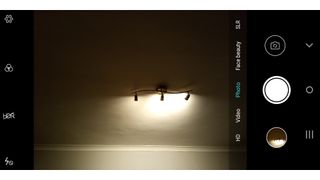Why you can trust TechRadar
Battery life
- 3,000mAh
- micro USB charging
- Standard charging speed
Just a few years ago a 3,000mAh battery seemed huge. These days? It's virtually the entry level point for Android phones.
The STK X2 has a 3,000mAh battery. It lasts through a day of moderate use, with perhaps 15% spare by bedtime. This is after several hours of audio streaming, a handful of photos captured, plenty of time spent in WhatsApp, and a little trawling through Twitter.
It, unsurprisingly, does not quite offer the phone abuse buffer of the Moto G6 Play, which has a 4,000mAh battery. However, we're reasonably happy with the X2's stamina, and it's actually roughly comparable with a lot of high-end phones.
Playing a 90-minute 720p video at maximum brightness, the STK X2 loses 24% of its battery. For comparison, the Moto G6 loses 21%, the Moto G6 Play 18% and the Nokia 6.1 23%. This is not one of the longest-lasting phones in its category. It's not even close to that.
There's nothing special to note in its charging either. It uses the dated micro USB socket, the included charger is a 5V, 2A plug. There's no fast charging here. And, it almost goes without saying at the price, wireless charging is not supported.

Camera
- 16MP and 0.3MP rear cameras with flash
- 16MP front camera
- Partially broken autofocus and no manual mode
The SKT X2 has two cameras on the back, and one on the front. Both of the main sensors, leaving out the secondary depth sensor on the rear, are made by Sony.
In some ways STK has bungled the X2's camera. But you know what? With a bit of patience, it can capture some pretty good shots that are also ripe for post-shoot editing.
Let's start with the worst part, though. The STK X2's focusing is partially broken, which becomes evident when shooting in low light. On occasion it refuses to focus, even when the subject is far away, which should make focusing quite simple.
You can watch it working through its focus range, using contrast detection to try to find the sharpest autofocus point. It gets to 'infinity' focusing (which is what we need), then slumps back down like a child who finds their homework too hard, leaving your image blurred.
This is extremely frustrating, especially when there's no manual focus mode to let you take the reins. The only way to get around is it to try to focus on other parts of the scene. Sometimes this lets you get the right focal plane.

You don't tend to see this in good lighting, but it ruins the experience of shooting with the STK X2 at night. But you know what? Use the HD mode, which takes longer, suggesting it may merge multiple exposures, and you can tease some surprisingly serviceable low light images out of the X2.
Next gripe: HDR. There's no auto HDR mode, and shooting HDR photos is very slow and sometimes seems to have barely any positive effect anyway.
Gripe three: shallow depth of field. The STK X2 has a very low resolution 0.3MP (VGA) secondary sensor for blurry background photos, using a mode STK calls SLR.
This mode is terrible, though, with barely more fidelity than a filter that blurs out an image around a circular focal point.

The STK X2's camera software is bad, and the processing results in slightly fuzzy or dithered fine detail down at pixel level. However, looking at the resulting images as a whole, discarding the ones where dodgy focus or HDR ghosting hasn't spoilt things, the photos are entirely okay. It seems the Sony sensor at the core of the X2 camera isn't too bad at all.
We’d still take a Moto G6 camera over this, though.
The front camera also has a 16MP sensor, and while the processing is a little slow, you can take better selfies here than with most phones at the price. Video capture tops out at 1080p, and there's no software stabilization. Your handheld footage will look fairly jerky.
Camera samples








Current page: Battery life and camera
Prev Page Introduction, design and display Next Page Anything else I should know?Andrew is a freelance journalist and has been writing and editing for some of the UK's top tech and lifestyle publications including TrustedReviews, Stuff, T3, TechRadar, Lifehacker and others.

